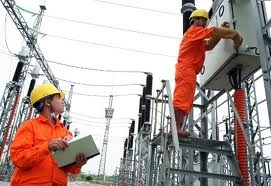SOEs are continuing to hold the economy back
 “Investment as a percentage of gross domestic product (GDP) is more than double what it was in 1990 at 43 per cent in the past five years – but most of that was due to a rise in less productive state investment,” stated an HSBC Global research report released in late July.
“Investment as a percentage of gross domestic product (GDP) is more than double what it was in 1990 at 43 per cent in the past five years – but most of that was due to a rise in less productive state investment,” stated an HSBC Global research report released in late July.
The report revealed productivity growth had slowed sharply in the past five years.
HSBC quoted McKinsey Global Institute’s statistics which show that Vietnamese SOEs have an average capital efficiency ratio of 1.62, meaning that they need 1.62 units of capital to generate an additional unit of revenue. In contrast, the average ratio for private domestic companies is just 0.47 and the ratio for multinational corporations is 0.692. Consequently, the state sector still made up 38 per cent of total GDP over the past five years, the same level as when equitisation process commenced in 1992.
“The dominance of the state sector, especially when most of the investment is less productive has left the economy relying on expanding credit to the state-owned sector to sustain its growth,” said the report.
“However, high inflation in 2008 and 2011 showed that this was not a sustainable strategy. With credit contracting in real terms in 2011 and in first half of 2012, Vietnam’s growth decelerated to 5.9 and 4.4 per cent year-on-year, respectively.
“Furthermore, the slowdown in economic activity and tightening of credit has weighed on the financial system as many of the loans to the unproductive and overextended sectors,” stated HSBC.
Accordingly, the percentage of non-performing loans rose to 4.4 per cent by the end of May 2012 from 2.2 per cent in 2010.
"While SOEs make up a large portion of total investment and are not generally using their capital efficiently, crowding out capital for more efficient enterprises causes disruptions to the macro-economy," said HSBC.
Hence, the bank concluded: "In the short term, Vietnam could cultivate growth by fostering sectors that are already productive - the private and foreign-invested ones because improving the utilisation of capital by the state sector would boost productivity."
It added: "Taking steps to improve Vietnam's business environment would not only add to its competitive edge, luring investors who are eyeing the country's cheap wage and burgeoning economy into taking the plunge, but also enable the private sector – the country's main growth driver – to further raise productivity by enlarging its share in the economy".
McKinsey Global Institute in a recent report also stressed the productivity of labour and capital will need to become the key drivers of Vietnam's future growth.
The report named "Sustaining Vietnam's growth: the productivity challenge" publicised in February 2012, stated Vietnam's challenge would be to ensure that capital was allocated across the economy.
It said: "What this means, in short, is that Vietnam needs less financing of unprofitable businesses, including SOEs, and improved supervision of the financial sector to ensure that investment is properly channeled to its most productive and profitable uses".
What the stars mean:
★ Poor ★ ★ Promising ★★★ Good ★★★★ Very good ★★★★★ Exceptional
Related Contents
Latest News
More News
- Vietnam urged to shore up supply-chain resilience amid global uncertainty (December 10, 2025 | 18:47)
- Unpacking new momentum in Vietnam’s M&A market (December 10, 2025 | 09:59)
- Forum honours outstanding M&A deals, strategies, and advisory firms (December 09, 2025 | 18:22)
- Vietnam enters defining phase of M&A growth (December 09, 2025 | 17:00)
- Landscape strong for domestic acquisitions (December 09, 2025 | 15:34)
- FDI in Vietnam jumps on additional capital and share purchases (December 09, 2025 | 13:56)
- THACO and Hyundai Rotem sign strategic railway partnership (December 09, 2025 | 12:14)
- Fundamentals required for M&A wins (December 08, 2025 | 11:08)
- When infrastructure shapes the flow of capital in logistics (December 08, 2025 | 10:39)
- Vietnam positions logistics as strategic growth engine (December 08, 2025 | 08:00)

 Tag:
Tag:




















 Mobile Version
Mobile Version